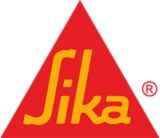Sika leads the industry with a comprehensive portfolio of high-quality, sustainable solutions. Innovation at Sika means turning challenges into opportunities by combining technical excellence, creativity, and customer-centric thinking. Our mission is to accelerate sustainable transformation across industries and enable our customers to build better, safer, and more durable environments worldwide.
Global Innovation Management
Sika has built a century-long legacy of innovation, establishing itself as a leading global technology company. Our culture of innovation is driven by courage, curiosity, and teamwork, and is supported by over 30,000 employees worldwide.
The Global Innovation Management Team designs and oversees innovation processes, providing tools and frameworks that enable purposeful innovation and ensure strategic objectives, quality standards, customer requirements, and market trends are met in every project.
Innovation at Sika thrives through a global network of creative minds.
Innovating with Purpose: Our Innovation Ecosystem
At the core of our innovation management system are three elements that drive value from the first spark of an idea to successful market entry.
Scouts: The Sika innovation journey starts with Scouts — a dynamic platform for ideation, trend discovery, and idea collection. It empowers employees to share insights, engage across teams, and surface opportunities grounded in real-world needs and future potential.
Exploration Process: Promising ideas move into the Exploration phase, where they are evaluated for strategic fit, feasibility, and business impact. This process ensures that only the most relevant and viable concepts are prioritized for development, aligning innovation with our long-term strategy.
Product Creation Process (PCP): The PCP is the structured framework for transforming ideas into market-ready solutions. It defines clear responsibilities, procedures, and checkpoints - from research to launch. It ensures product safety, compliance, and sustainability across the value chain.
Together, Scouts, the Exploration Process, and the Product Creation Process form a robust system that turns insight into impact—scouting ideas, validating potential, and delivering solutions that perform.
Navigating the Multifaceted Landscape of Innovation Management
Sika aims to innovate products that enable sustainable construction and transportation, reducing environmental impact along the value chain. Indeed, sustainability has become a key driver for R&D projects at Sika. It fuels the quest for alternative, renewable materials, low carbon solutions, new recycling concepts more efficient production methods like modular building, resource efficiency, healthier and safer spaces for living and working, and digitally enhanced solutions.
With over 1,800 Research and Development employees, Sika operates 18 Global Technology Centers and over 100 regional laboratories. These centers provide expertise in materials science, chemistry, and digital technologies, forming one of the industry's most integrated innovation networks. Here, researchers, engineers, and customers collaborate to turn ideas into tangible, market-ready solutions.
Sika's concept (“Nuage”) for digitalizing R&D processes worldwide facilitates collaboration across teams in different geographies and enables researchers to conduct experiments and simulations using digital tools and technologies. The global digital laboratory allows researchers to collaborate with teams worldwide in real time, and access a wide range of data, software, and hardware resources.
Sika helps its customers overcome challenges by developing innovative products in response to stricter climate-related and chemical regulations, growing sustainability demands. Customer-centricity in both innovation and sustainability encompasses close collaboration with customers and market partners to address specific customer requirements while integrating sustainable materials and practices. Sika’s goal is to foster long-term partnerships and sustainable growth.
Digitalization and AI have a profound impact on the way we are working, this applies to Research and Development (R&D) too. AI-powered systems enable advanced data analysis, accelerating the discovery process and fostering innovation. This transformation brings cultural shifts. Sika’ s culture of collaboration evolves to embrace agility and adaptability, as teams adopt iterative and data-driven approaches.
Sika's approach to open innovation emphasizes collaboration with external partners to accelerate innovation and strengthen Sika’s overall business by expanding its product portfolio, optimizing processes, and reinforcing its leadership in technological and market advancements. Sika partners with universities and research institutions, tapping into cutting-edge research and specialized expertise in areas such as materials science, sustainability, and construction technology. Collaboration with startups and industry leaders aims to exchange knowledge and co-develop breakthrough technologies that drive efficiency and create new market opportunities.
Exclusivity is a crucial advantage in bringing new products and technologies to market. It not only shields the company from imitators but also assures customers that whenever they see the Sika name, they are receiving an original product of the highest quality. In 2024, Sika reported 264 new inventions (2023: 188), leading to 125 initial patent applications (2023: 108). By the close of 2024, Sika's patent portfolio had grown to include 1,606 distinct patent families, totalling 5,772 (2023: 5,680) individual national patents.
Partnerships and Collaborations
Innovation at Sika is powered by strong partnerships — across teams, disciplines, and borders. We work closely with leading universities, research institutes, and technology partners to drive scientific breakthroughs and sustainable solutions.
At corporate level, Sika collaborates with institutions such as ETH Zurich, EPFL Lausanne, University of Illinois, Beijing University of Chemical Technology, and KIT on cutting-edge research. Locally, the engage in application-focused projects, such as with University of Cádiz on concrete protection and facades, or with KIT and LUH Hanover on URBAN — a project turning old concrete into new building materials through a CO₂-reducing circular process.
Globally, the company supports initiatives like Japan’s T-CAB for adhesive innovation, and in the U.S., partner with the Department of Energy, MIT, and others to advance energy efficiency and concrete sustainability. These collaborations contribute to innovation that is high-performing, practical, and built for a sustainable future.

